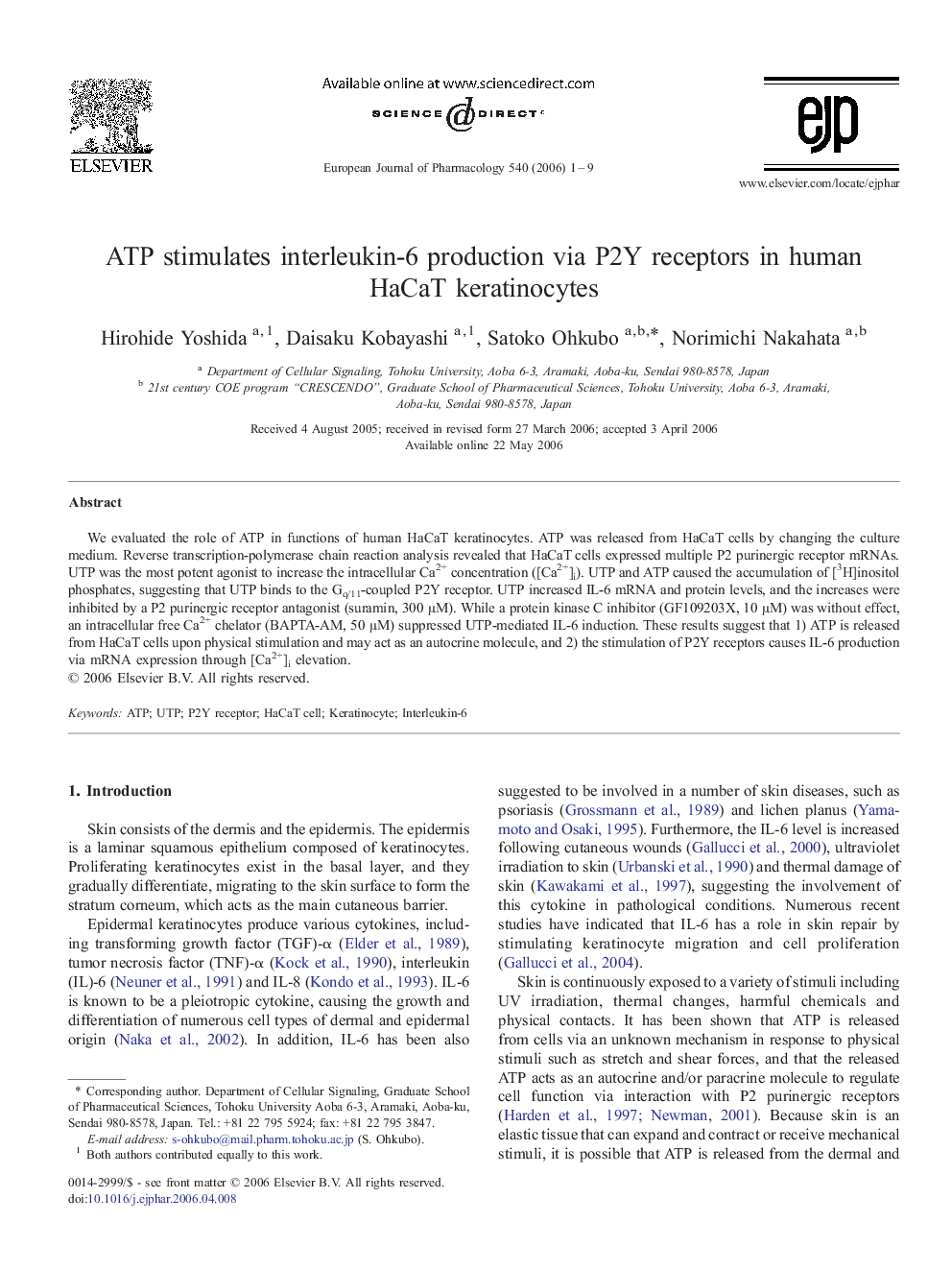| Article ID | Journal | Published Year | Pages | File Type |
|---|---|---|---|---|
| 2537062 | European Journal of Pharmacology | 2006 | 9 Pages |
We evaluated the role of ATP in functions of human HaCaT keratinocytes. ATP was released from HaCaT cells by changing the culture medium. Reverse transcription-polymerase chain reaction analysis revealed that HaCaT cells expressed multiple P2 purinergic receptor mRNAs. UTP was the most potent agonist to increase the intracellular Ca2+ concentration ([Ca2+]i). UTP and ATP caused the accumulation of [3H]inositol phosphates, suggesting that UTP binds to the Gq/11-coupled P2Y receptor. UTP increased IL-6 mRNA and protein levels, and the increases were inhibited by a P2 purinergic receptor antagonist (suramin, 300 μM). While a protein kinase C inhibitor (GF109203X, 10 μM) was without effect, an intracellular free Ca2+ chelator (BAPTA-AM, 50 μM) suppressed UTP-mediated IL-6 induction. These results suggest that 1) ATP is released from HaCaT cells upon physical stimulation and may act as an autocrine molecule, and 2) the stimulation of P2Y receptors causes IL-6 production via mRNA expression through [Ca2+]i elevation.
